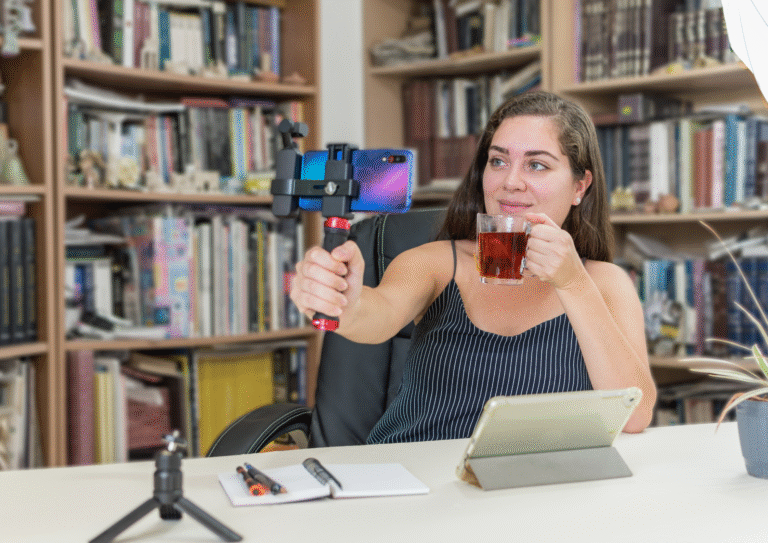
Do you ever feel like you’re drowning in a never-ending ocean of videos, articles, and posts? You scroll and scroll, but instead of feeling informed or entertained, you just feel tired, overwhelmed, or even a little lost? Do you wish there was a way to enjoy online content without feeling drained or like you’re wasting your precious time? This feeling of digital overload and the desire for a calmer, more meaningful online life is a problem many of us face. If you want to learn how to take back control of your screen time and truly enjoy what you watch and read, keep reading. You’re about to discover a powerful new way to engage with the digital world.
Mindful content consumption is much more than just being careful about what you click on. It’s a way of thinking that can totally change your relationship with the internet and your own well-being. This matters more than people realize because in our always-on world, how we consume digital content directly affects our focus, our mood, and our ability to think clearly. It’s about choosing what you let into your mind, instead of letting the internet choose for you.
Some people might say, “Why bother? It’s just the internet! I watch what I want, when I want. Trying to be ‘mindful’ about it sounds like too much work, or like you’re trying to control people’s fun.” They might argue that the whole point of online content is to relax and escape, and overthinking it takes all the joy out. On the one hand, it’s true that we all need time to unwind and enjoy ourselves. However, this way of thinking misses a huge point. When we consume content without thinking, we often end up feeling worse, not better. It’s like eating a whole bag of chips. . . feels good for a second, but then you feel sluggish and regret it. Our brains are constantly taking in information, and if we’re not careful, we can fill them with digital junk food. It’s almost like our screens have become a giant, always-open buffet for our brains, and we’re just grabbing whatever looks shiny.
The idea behind mindful content consumption is simple, but it’s a game-changer. It means paying attention to what you’re watching or reading, how it makes you feel, and why you’re engaging with it in the first place. Think of it like eating a meal mindfully. You notice the flavors, the textures, how your body feels. You don’t just gulp it down. The same goes for digital content. When you practice mindfulness, you’re not just passively staring at a screen. . . you’re actively choosing what you let into your mind. As a result, you become the boss of your digital experience, not the other way around.
Furthermore, being mindful can actually improve your focus and memory. When you truly pay attention to a video or article, you’re more likely to remember what you learned or enjoyed. This is because your brain is actively engaged, rather than just skimming. Research from the University of Texas at Austin (Rosen et al., 2013) has shown how constant digital interruptions can hurt our attention spans. While not directly about mindful consumption, it highlights the problem that mindfulness aims to solve.
“Our findings suggest that frequent engagement with digital media can lead to reduced attention and increased distractibility, underscoring the need for intentional media habits.”
This shows that if we’re always jumping from one thing to another online, our brains get worse at focusing.
On the other hand, some might say that being mindful takes the spontaneity out of online exploration. They might worry about missing out on trending topics or new discoveries. However, mindful content consumption isn’t about cutting yourself off from the internet. It’s about being smart and intentional. It’s about choosing quality over quantity, and purpose over mindless scrolling. This explainer on mindful content consumption shows why it’s essential for a healthier digital life.
So, how can you start being more mindful about your online content?
First, ask yourself “Why?” Before you click, ask why you’re watching or reading this. Is it for learning, entertainment, or just to kill time?
Second, set intentions. Decide what you want to get out of your online time. Maybe you want to learn one new thing, or watch one funny video.
Third, pay attention to how you feel. As you consume content, notice your emotions. Does it make you feel happy, inspired, calm, or stressed and drained? If it’s the latter, it might be time to move on. As a result, you’ll start to recognize patterns.
Moreover, take breaks. Step away from the screen often. Even a few minutes can help reset your mind.
Fourth, curate your feed. Unfollow accounts that make you feel bad or that don’t add value to your life. Fill your feed with content that uplifts, informs, or genuinely entertains you. Fifth, engage actively. Instead of just watching, try to think about what you’re seeing. Ask questions, make connections. This makes your brain work in a good way. Experts like Cal Newport, author of Digital Minimalism, often talk about the importance of being intentional with our technology use to live more focused lives.
In conclusion, mindful content consumption is a powerful tool for navigating the digital world without feeling overwhelmed or drained. It’s about making conscious choices, understanding your own reactions, and taking control of your online experience. By practicing mindfulness, you can transform your screen time from a source of stress into a source of genuine learning, connection, and peace. Take a moment to reflect. . . what’s one small step you can take today to be more mindful about the content you consume? Maybe it’s turning off notifications for an hour. . . or simply choosing one piece of content to truly focus on, without distractions. The power to create a calmer, more fulfilling digital life is in your hands.
References:
Rosen, L. D., Carrier, L. M., & Cheever, N. A. (2013). Facebook and MySpace use in adolescents: Social networking, loneliness, and social communication skills. Computers in Human Behavior, 29(4), 1362-1369.
Newport, C. (2019). Digital Minimalism: Choosing a Focused Life in a Noisy World. Portfolio/Penguin.




